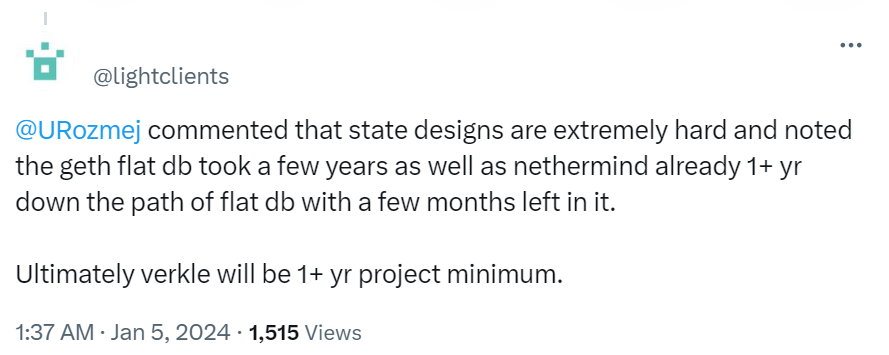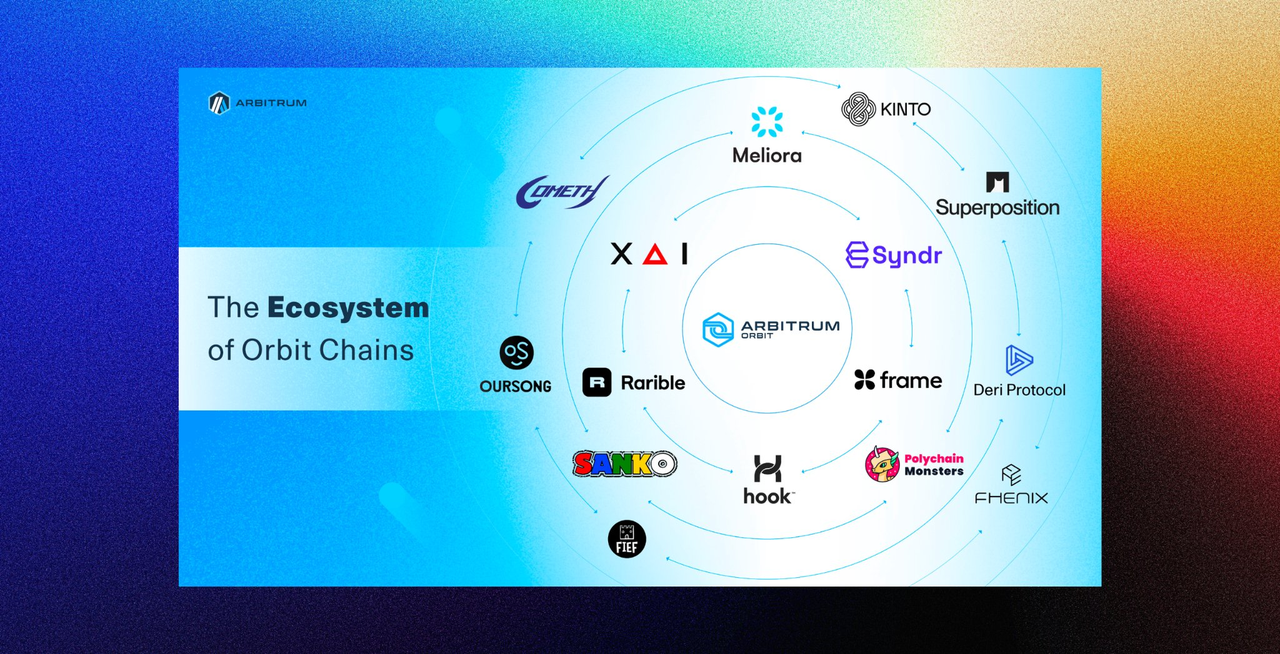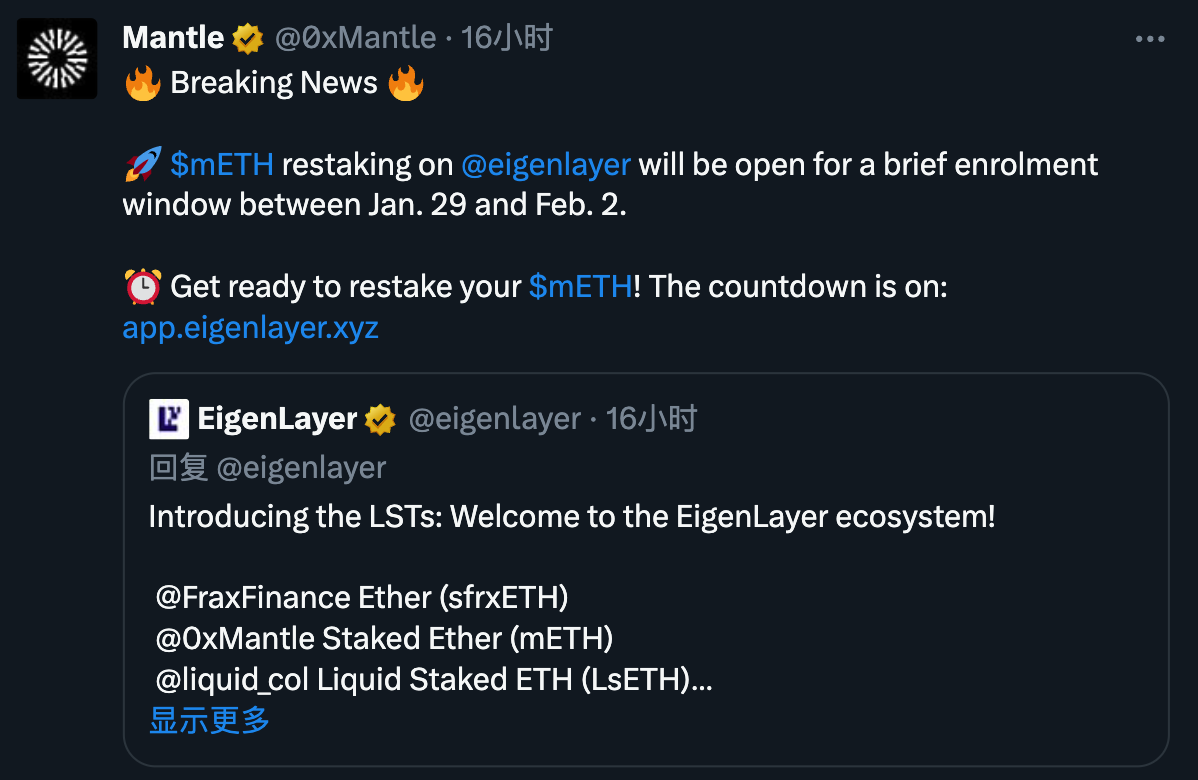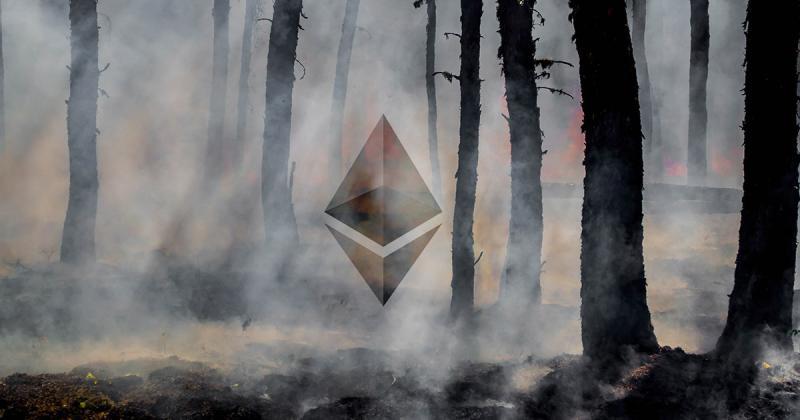A summary of the favorable factors and potential targets in the ETH ecosystem
Author: BlockBeats
On January 11, the U.S. SEC announced the approval of 11 Bitcoin ETFs, marking a milestone event that opens a new chapter for the crypto industry. The crypto market will welcome more capital inflow, and with the "biggest boot" of the Bitcoin ecosystem landing, the market's expectations will shift to the ETH ecosystem. Today, ETH has seen a 7% increase. BlockBeats has compiled the favorable factors and key targets for the ETH ecosystem in the coming months.
Favorable Factors for the ETH Ecosystem in the Coming Months
Cancun Upgrade
To achieve the positioning of a "world computer," Vitalik planned an upgrade roadmap for Ethereum at its inception, consisting of four phases: Frontier, Homestead, Metropolis, and Serenity. Currently, Ethereum is in the Metropolis phase, facing limitations due to performance issues and high gas fees.
The Cancun upgrade, also known as the Cancun-Deneb upgrade, is another upgrade to the Ethereum main chain following the Shanghai upgrade, which will effectively enhance the scalability, security, and usability of the Ethereum network, increasing the TPS of the main chain and reducing gas fees, thereby achieving scalability for the Ethereum main chain.
After the Cancun upgrade is completed, the network utility of Ethereum will significantly improve, its infrastructure will become more robust, and its status as the "king of public chains" will be solidified. In addition to Ethereum itself, the Layer 2 sector will also experience unprecedented development and prosperity.
On January 5, a developer from the Geth team, lightclients, announced that the 178th Ethereum Core Developer Execution Meeting (ACDE) has concluded. This meeting reconfirmed that the Cancun upgrade on the Goerli testnet is scheduled for January 17, with January 30 and February 7 set as the upgrade dates for the Sepolia and Holesky testnets, respectively. If all goes well, developers will release the Goerli client next week, and the Sepolia/Holesky client will be released during the week of January 22.
 Related reading: How will the market landscape of Layer 2 evolve after the Cancun upgrade?
Related reading: How will the market landscape of Layer 2 evolve after the Cancun upgrade?
Ethereum ETF
With Bitcoin ETFs approved, the community's focus has shifted to the delayed applications for Ethereum ETFs by the SEC.
On December 19, the U.S. SEC postponed its decision on the Ethereum spot ETF applications from ARK/21 Shares and VanEck, with the new decision deadline set for late May 2024. According to a report from The Block on the same day, the SEC also delayed its decision on the Hashdex Nasdaq Ethereum ETF and Grayscale's Ethereum Trust conversion application.
Bloomberg analyst James Seyffart hinted in the Unchained podcast that the U.S. SEC may be changing its stance on Ethereum. Seyffart pointed out that the SEC's recent approval of Ethereum futures ETFs suggests that the SEC may be subtly acknowledging Ethereum as a commodity rather than a security.
On January 11, Cointelegraph reported that Bloomberg ETF analyst Eric Balchunas stated that the likelihood of a spot Ethereum ETF being approved in May is 70%, while also hinting that "behind-the-scenes channels indicate that a spot Ethereum ETF would do well."
However, digital asset lawyer Joe Carlasare believes that the approval timeline for a spot Ethereum ETF may take longer than expected, as the SEC is also working to carefully craft a precedent that allows them to retain some discretion in deciding which digital asset ETFs can enter the market.
Layer 2 Scalability Narrative
On one hand, the Ethereum Cancun upgrade EIP 4844 Proto-Danksharding proposal will bring more possibilities for Layer 2 Rollup projects. On the other hand, in exploring Ethereum's scalability, Layer 2 solutions have developed a thriving market. In addition to the Cancun upgrade, the "scalability war" that began in the summer of 2023 has seen Layer 2 solutions each launch their own scalability plans.
To date, with Layer 2 leaders Optimistic and Arbitrum, as well as the newly popular Layer 2 Metis, the community has witnessed various possibilities within the Layer 2 ecosystem. It is foreseeable that in 2024, Layer 2 will continue to bring more imagination to the Ethereum ecosystem.
Related reading: How will the market landscape of Layer 2 evolve after the Cancun upgrade?
Optimistic: OP Stack Launches "Superchain Universe"
Currently, Optimistic and Arbitrum dominate the vast majority of the Layer 2 market share.
In October 2022, Optimism introduced the OP Stack, a "highly scalable, highly interoperable modular open-source blueprint." In February 2023, Optimistic proposed the Superchain strategy, allowing L2s using the OP stack to achieve secure, efficient, and atomic-level communication and interaction of information and assets with each other due to architectural consistency, similar to Cosmos's "Interchain," which is referred to as Superchain.
After the launch of the OP stack, it gained significant adoption, with many public chains such as Coinbase, opBNB, Zora, and Worldcoin providing strong brand endorsements for the OP Stack. In June 2023, the Optimism blockchain announced its rebranding to OP Mainnet to distinguish between OP Mainnet and the Optimism ecosystem chain built on the OP Stack. It is foreseeable that in 2024, the multi-chain universe of the OP stack will become even more prosperous.
Arbitrum: Orbit Drives Ecological Layer 3 Boom
On January 3, Binance's latest Launchpool project Xai (XAI) attracted community attention. After several days of decline following its launch, XAI saw a surge of over 25% on January 11. As a network customized by Arbitrum to meet the demands of large-scale Web3 games, the Xai (XAI) and its representative Orbit network ecosystem hold significant strategic importance for Arbitrum.

Arbitrum Orbit Ecosystem
In June 2023, the Arbitrum development team Offchain Labs released the Arbitrum Orbit development tools, aimed at helping developers more easily develop on the L3 blockchain Arbitrum Orbit and manage their own Arbitrum Rollup and AnyTrust chains.
Arbitrum Orbit is compatible with EVM+, which was launched by Stylus. This means that developers do not need to abandon the languages and toolchains they are currently using and can directly deploy EVM-compatible smart contracts using Solidity, C, C++, and Rust. Additionally, the Arbitrum Orbit platform has added support for custom gas tokens, which are used to pay transaction fees. This development allows the Orbit blockchain to use specific ERC-20 tokens that meet technical standards to handle gas or transaction fees on its network. Previously, the Orbit chain could only use Ethereum as a gas token.
The community believes that Orbit will drive more breakthroughs in the Arbitrum ecosystem. In December 2023, TreasureDAO on the Arbitrum ecosystem announced plans to build a gaming chain and intends to use MAGIC as the gas token. In the future, the initiatives taken by Layer 2 to attract developer resources will also bring more liquidity to the Ethereum ecosystem.
Metis: Decentralized Sequencer
In addition to established projects like Optimistic and Arbitrum, the Layer 2 potential can also be seen in Metis, which has seen over 350% growth in two weeks. In December 2023, MetisO's TVL surpassed $700 million, ranking third after Base and zkSync.
Metis is an Ethereum Layer 2 scaling solution developed based on Optimistic Rollup, co-founded in 2018 by Elena Sinelnikova, Kevin Liu, and Yuan Su, focusing on Layer 2 scaling and general infrastructure projects.
Layer 2 solutions are often criticized for centralization issues in sequencing, as most project teams initially tend to centralize operations to ensure security and stability. However, after the Metis Foundation announced the establishment of an ecological development fund consisting of 4.6 million METIS tokens, Metis is expected to become the first decentralized sequencer of Optimistic Rollup by early next year. The growth of Metis also adds positive factors to the narrative of sequencer technology. Decentralized sequencers are just the beginning of unleashing the potential of Rollup Layer 2, and the community's long-awaited visions of Layer 2 native DeFi and ecological explosions must be predicated on this.
Related reading: After a weekly increase of over 190%, what potential projects in the Metis ecosystem are worth paying attention to?
Various ZK Rollups: Starknet Airdrop Imminent, Ecosystem Poised for Takeoff
On December 1, 2023, the Starknet Foundation announced that it had conducted an airdrop snapshot and would distribute STRK tokens to certain previously active users and contributors in the first quarter of 2024, while unlocking previously issued tokens.
RabbitX is a derivatives platform built on Starknet. Its token RBX saw an increase of over 400% between October and November 2023, but has since retraced. In addition to DEX, the chain game ecosystem Loot Realm on Starknet has also gained market attention with its concept of "full-chain gaming." Driven by the Loot NFT community DAO, Loot Realm includes multiple sub-games, and its token LORDS has increased nearly 90% in the past month.
Related reading: Starknet will issue an airdrop and unlock tokens; which ecological projects are worth paying attention to?
In addition to Starknet, expectations for zkSync's airdrop are also growing stronger. Currently, noteworthy DEXs on zkSync include SyncSwap and Mute.io. Syncswap's daily trading volume exceeds $9 million, with a total supply of 100 million tokens, and the airdrop will account for 15%. Mute.io is among the first native DEXs on zkSync Era, offering various yield amplifiers in addition to trading, allowing users to purchase MUTE tokens at a discount through bonds with a 7-day lock-up period. As of the time of writing, MUTE has seen an increase of over 15% in the past 24 hours.
Additionally, ConsenSys's Layer 2 network Linea is also worth noting. According to Dune Analytics data, as of December 24, 2023, the Linea mainnet has crossed over 290,000 ETH, with over 390,000 interactive addresses. Currently, there are over 40 protocols on Linea, among which Mendi Finance is the native lending project on Linea, ranking second in TVL within the ecosystem, and its token MENDI has increased over 48% in the past 24 hours.
The Mantle network is a unified ecosystem and EVM-compatible Layer 2 network created after the merger of Mantle and BitDAO, adopting a modular architecture and using EigenLayer as a DA solution to provide new scalability possibilities for Ethereum. Recently, Trader Joe launched a DEX Merchant Moe specifically for the Mantle ecosystem, with JOE holders receiving a 2.5% airdrop of the total project token supply during the new token MOE TGE, and an additional 5% will be redistributed over the next 12 months.
Related reading: Overview of the modular Layer 2 Mantle mainnet Alpha ecosystem
The native DEX FusionX on the Mantle network has seen its TVL triple in the past two months, reaching $25 million at the time of writing. FusionX is the first community-driven AMM on the Mantle network, featuring a special function that allows users to obtain preferential purchase qualifications for new tokens by staking specific tokens.
On January 10, EigenLayer announced the launch of three new liquid staking tokens and provided Restaking services, including the receiving token mETH for Mantle LSP, with an annual interest rate of 7.2%.

The Type 1 zkEVM network Taiko, favored by star VCs and recognized by Vitalik, is worth attention. In June 2023, Taiko announced it raised $22 million in two rounds of seed funding, with the first round led by Sequoia China with $10 million and the second round led by Generative Ventures with $12 million. The community considers Taiko one of the most promising projects in the zkEVM space, aiming to become a fully decentralized, Ethereum-equivalent zero-knowledge scaling zkEVM, allowing developers and users to safely experience Ethereum with lower transaction fees and without making any changes to Ethereum.
Currently, Taiko is still in the testnet phase. In December 2023, Taiko launched a developer incentive program with a prize pool of $30 million and initiated community education activities, with users completing tasks eligible for loyalty points.
Related reading: In-depth analysis of Ethereum zkRollup leading project Taiko proposing new scaling solutions—Controversial Base Rollup (BCR)
Low Market Cap Layer 2 Targets
Compared to the $3 billion circulating market cap of Arbitrum and Optimism, some recently developed Layer 2 solutions with lower market caps often have more novel narratives, and their value discovery is still in the early stages, showing greater investment potential in the next bull market.
On December 7, 2023, the ZK L2 community network ZKFair officially announced the launch of its testnet, open to all community users. ZKFair is the first L2 network based on Polygon CDK, Celestia DA & Lumoz ZK-RaaS, and it attracted significant community attention with its 100% community Fair Launch innovative model. On the day of the testnet launch, over 30,000 users flooded the network for interaction, and three days after launch, ZKFair's TVL surpassed $12 million.
On January 10, ZKFair announced the launch of the ZKF staking mechanism, allowing users to stake ZKF to receive 75% of the Gas Fee of the ZKFair chain as dividends, with earnings calculation and distribution starting from January 15. Additionally, from January 14 to January 20, users staking ZKF will also receive airdrop rewards from the first Fair launch ecological project on ZKFair, Sideswap (SIDE).
Related reading: Understanding the ZKFair economic model
In the crypto space, chain games still hold imaginative potential. Hypr Network is a Layer 2 blockchain built on Ethereum, aimed at enhancing its functionality and addressing its limitations. Hypr is dedicated to providing a fast and cost-effective platform for zero-knowledge on-chain games. By utilizing zero-knowledge proofs, Hypr ensures enhanced data privacy and security for gaming applications, allowing players to transact and interact without revealing sensitive data. According to Coingecko data, its token HYPR has seen a 25% increase in the past week.
EigenLayer Activates Restaking Economy
The concept of Restaking introduced by EigenLayer in June 2023 has become a hot topic of discussion. Restaking allows users to re-stake already staked Ethereum or liquid staking tokens (LST) to provide additional security for various decentralized services on Ethereum and earn extra rewards.
However, the Restaking model somewhat limits the liquidity of capital, leading to the emergence of LST tokens. BlockBeats has compiled noteworthy projects in the LST sector.
Restake Finance is the first protocol to launch modular liquidity re-staking for EigenLayer. After users deposit LST generated from liquid staking into Restake Finance, they can deposit it into EigenLayer and generate reaked ETH (rstETH) as a re-staking certificate. Users can participate in various DeFi protocols and earn yields through rstETH while also earning points for EigenLayer rewards.
Restake Finance recently experienced a highlight moment, with its token RSTK seeing over 200% growth in the past two weeks. Additionally, as one of the entry points into the EigenLayer ecosystem, EigenLayer's LRT and strategy management platform Renzo Protocol officially launched on the Ethereum mainnet on December 19 and announced the launch of the points program Renzo ezPoints on January 4, aimed at rewarding users who contribute to the protocol, allowing users to earn points by minting ezETH.
In the re-staking sector, several projects have transitioned from LSD operations. KelpDAO is an organization supported by the LSD protocol Stader Labs, focusing on the field of liquidity re-staking, with a business model similar to Restake Finance. Notably, Kelp DAO currently has no token, while Stader Labs' token SD has achieved over 100% growth in the past month.
On October 18, the DeFi protocol ether.fi announced the launch of the liquid staking token (LST) eETH, allowing users to earn rewards by staking Ether (ETH). As of the time of writing, ether.fi's TVL has surpassed $150 million, and according to the roadmap released by the team, ether.fi plans to issue tokens in April.
The Ethereum staking infrastructure SSV Network announced on January 4 that it has begun re-staking operations, allowing the responsibilities of EigenLayer validators to be distributed to SSV, leveraging SSV's distributed and non-custodial features to enhance the performance and security of its validators. Notably, SSV's re-staking nodes are highly distributed, currently able to collaborate with four nodes: ANKR, Forbole, Dragon Stake, and Shard Labs for re-staking services. In the past week, SSV has seen over 30% growth.
Initially positioned as an Ethereum staking protocol, Swell is now gradually aligning its business with Restaking. By combining token distribution with Restaking, its derivative LST token swETH is the third-largest TVL token on EigenLayer, following stETH (Lido) and ETH, with over 110,000 staked. The Restake version of swETH is referred to as rswETH, focusing on the Restaking sector, and its established Liquid Restaking Committee has already seen projects like AltLayer and InfStones join.
On January 11, Pendle, positioned as an LSD+RWA yield strategy protocol, announced on social media that it will launch ether.fi's liquid staking token (LST) eETH, officially entering the Restaking/LRTfi field, allowing users to earn more rewards through its Liquid Restaking Tokens (LRT). On the same day, PENDLE saw an increase of over 30%.
Related reading: RSTK doubles in a day; an overview of Restaking sector ecological projects
Since EigenLayer ignited the Ethereum re-staking sector, other EVM and non-EVM ecosystems have also begun to develop their own re-staking concept projects. Picasso is a network supporting cross-ecosystem IBC, with its native token PICA designed and deployed to support multiple L1 blockchains such as Polkadot, Kusama, and Cosmos. Recently, Picasso has brought the re-staking concept to the Solana network, allowing users to stake SOL, mSOL, jitoSOL, and other LP tokens to support Solana's cross-chain IBC validators.
The Omnichain Liquid Restake protocol Layerless, supported by EigenLayer and LayerZero, is also creating Omnichain Restaked Tokens (ORT). When users deposit LST (such as stETH, cbETH, or rETH) into EigenLayer, they receive an ORT (Omnichain Restaked Token), representing their share in EigenLayer, providing liquidity, composability, and usability in DeFi protocols. Currently, Layerless plans to launch its testnet in the first quarter.
Related reading: The Restaking narrative is heating up; what re-staking projects exist outside the Ethereum ecosystem?
Concepts like LSDFi, RWA, DEX, etc.
The Shanghai upgrade in 2023 has led to unprecedented prosperity in the LSD sector, bringing significant liquidity to the Ethereum ecosystem. According to DefiLlama data, there is a total of $32 billion in staking, with Lido having over $24 billion worth of ETH staked, capturing a market share of 75%, far exceeding other competitors. With more capital flowing into Ethereum, it is foreseeable that the LSD market will continue to heat up. On January 10, LDO briefly surpassed $3.8, increasing over 18% in 24 hours.
In addition to releasing liquidity around EigenLayer, the small market cap project Prisma, backed by prominent figures, is also worth attention. Prisma has received joint endorsements from founders of multiple projects, including Curve Finance, Convex Finance, Swell Network, and CoingeckoFinance, as well as investments from well-known projects like Frax Finance, Conic Finance, Tetranode, OK Venture, Llama Airforce, GBV, Agnostic Fund, Ankr Founders, MCEG, and Eric Chen.
Currently, driven by RWA, the potential market cap of RWA could reach trillions of dollars within the next five years. MakerDAO, which provides stablecoins for Ethereum, has already made arrangements in the RWA direction.
MakerDAO's first formal RWA project, New Silver, was established in 2021, with a debt ceiling of $20 million, backed by mortgage assets initiated by New Silver through an issuer SPV on the Centrifuge tokenization platform. Additionally, BlockTower Capital's U.S. Treasury RWA project BlockTower Andromeda is currently one of MakerDAO's largest RWA projects, with a debt ceiling of $1.28 billion and an asset scale exceeding $1 billion.
Related reading: Overview of popular MakerDAO RWA projects and analysis of DeFi capturing off-chain asset trading architecture
Moreover, Uniswap v4, Uniswap X, and other intent-based DEXs are becoming themes for 2024.
In June 2023, Uniswap released the Uniswap v4 code draft, with a vision to allow anyone to make trade-offs through the introduction of "hooks." According to Uniswap Labs, Uniswap V4 will be launched after the Dencun upgrade. A month later, Uniswap announced the launch of a non-custodial, Dutch auction-based protocol UniswapX. According to the team, Uniswap v4 optimizes pool customizability to maximize expressive power, while Uniswap X optimizes routing to maximize output tokens. Together, these two protocols provide traders with the best trading experience while maintaining their commitment to decentralized, censorship-resistant, and permissionless markets.
Similarly, another project riding the intent narrative is CowSwap, a DEX aggregator that combines batch trading, intent, and MEV protection. Utilizing batch auctions as its core price discovery mechanism, CowSwap determines a unified settlement price for all trades in a batch, eliminating common issues like front-running in immediate execution models. Batch auctions can also settle many trades simultaneously, optimizing gas fees.










